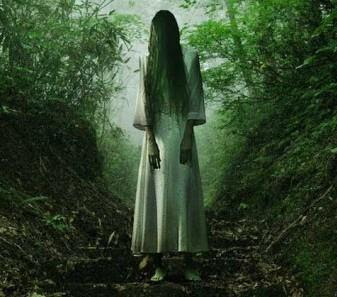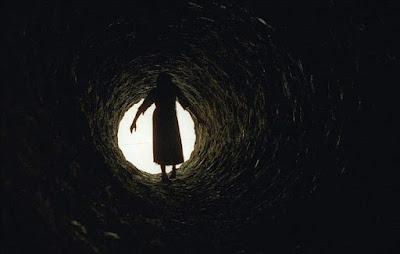During
my Earthquake review, I hinted that
The Towering Inferno was the mother of all disaster movies, certainly in the seventies cycle. It was exciting to see this in the cinema in 1975 (the UK got most films about six months later than the US), and it still stands up very well today - not something you can say of all Irwin Allen's movie productions. The non-CGI stuntwork and big-name cast is hard to beat. I’d finally got it on anamorphic widescreen DVD earlier this year, and Paul Newman's recent passing prompted me to finally watch it.
Most disaster movies can only be enjoyed with more suspension of disbelief than usual – how often do ocean liners capsize, how often do bees attack? But skyscraper fires are all too plausible – though I admit that at the time, I thought it was another over-the-top impossible Hollywood fantasy. Watching it now, it’s hard not to think of 9/11. When the World Trade Center was on fire, I was naively expecting all the rescue attempts that I’d seen in
The Towering Inferno to be rolled out. I wondered why the nearby helicopter rides weren’t airlifting people off the roof. It’s beyond ironic that the filmmakers had the newly-built Twin Towers in mind when making
The Towering Inferno. The film was intended as entertainment, but also acted as a vivid reminder of the dangers on the inadequacy of tall building fire regulations and building standards.

Although it now reminds me of the tragic end of the Twin Towers, the film rises to this retrospective challenge and still holds up today, showing the realities of big fires, and depicting the fire department’s heroism. Admittedly, there are a few too many explosions to pump up the visual excitement, but for Irwin Allen this is restrained. From the promotional films (available on the second disc of the special edition) and the garish gory pre-production art of various overly inventive death scenes, one can only presume that other producers and saner heads managed to tone down the bodycount in favour of good taste.

When starting work on the movie, one of those periodic Hollywood coincidences cropped up - two film studios had the same idea at the same time. In fact, two studios had bought books about skyscraper fires, The Glass Inferno and The Tower. With the WTC newly up, this was not an uncommon worry in America, or even worldwide at the time. The studios, for once, combined efforts and scripts to make one huge movie. One wonders why they haven’t done it since - with the various Robin Hood, Christopher Columbus, meteor’s hitting Earth, head-to-head box office clashes.
 Inferno
Inferno is the best of the disaster movies, with the great cast, grand scale, and a tight story delivering continuing logical peril, and a quite terrifying situation. Faulty wiring sabotages the opening ceremony of the tallest skyscraper in the world. As the guests celebrate in a party at the top of the tower, little do they realise that a fire halfway up the building is closing in on them. As the fire department works slowly up the building, various risky rescue methods are needed to try and get everyone out – including the architect, the Mayor. With so many characters, the story takes a while to tell, but the time flies by. In the cinema, this even had a half-time intermission.

It’s a very special cast, with the late Paul Newman, Steve McQueen and William Holden all expecting top billing. Faye Dunaway (
The Eyes of Laura Mars,
Network,
Bonnie and Clyde) adds frosty sex appeal and additional suspense as she tries not to pop out of her evening dress. Wrinkly but still perky, dancer Fred Astaire and Jennifer Jones (
A Portrait of Jennie) are the token oldies. Richard Chamberlain (
Dr Kildare,
The Three Musketeers), Robert Wagner (
The Pink Panther) and Robert Vaughn (
The Man From UNCLE) are the younger things. O.J. Simpson (
Capricorn One) plays the head of security.
McQueen chose the fire chief role thinking it was the best part, but he spends all his time dashing around, ridiculously doing all the toughest rescues himself, reminiscent of
T.J. Hooker ignoring all his younger staff. I remember his (very brief) swearing in the film was new to family certificated films back then. Paul Newman gets far more acting time and comes off as a more real and likeable character.

The fire-fighting scenes look genuinely dangerous, setting a high standard of spectacle and stuntwork unequalled until
Backdraft came along in 1991. The superb 100-foot high model looks all the more spectacular for largely being shot at night, as does the back-projection and compositing work. Even the model helicopters smoothly intercut with the real thing. The gigantic and fully-functional sets put the money up on the screen. The streets of San Francisco take a pounding from having dozens of fire tenders speeding to the rescue.
British director John Guillerman directed the non-action sequences – getting sobering and dramatic performances out of a great cast. This is one disaster movie that doesn't feel padded out with melodrama. The film's success must have lead to Guillerman being invited to make another event movie - the remake of
King Kong (1976).

There's an early pre-
Jaws score from John Williams, illustrating how much of his early career was with Irwin Allen - from the theme tunes for TV shows like
Lost In Space and
Land of the Giants, and into the big time movies with this and
The Poseidon Adventure, all produced by Allen. The album was my first of many Williams soundtracks, though naturally it was on vinyl. The score was expanded and released on CD back in 2001, but is out of print now.

Last year, we took time to visit the Bank of America building in San Francisco, used as the main shooting location in the film, as the entrance plaza to 'The Glass Tower'. Unfortunately, nowadays the public aren't allowed inside. However, the suspenseful glass elevator scene was inspired by the wall-hugging elevators at the nearby Hyatt Regency. The spectacular hotel lobby, and its elevators, briefly appear in the film and are well worth a visit. It also served as a pivotal location in Mel Brooks'
High Anxiety.
I watched
The Towering Inferno on the region 1 DVD special edition (pictured at the top), which includes a second disc full of original promotional featurettes and a very interesting gossipy TV special about the making of the film and the on set clash of personalities of the mega-cast.

I'll also mention the DVD of
The Fantasy Worlds of Irwin Allen as an excellent documentary career overview of all his iconic films and TV shows, full of rare footage and insightful interviews. But "Danger, danger", it might make you buy
a lot of DVD boxsets...
There's more about
Irwin Allen here, and a huge marvellous site dedicated to
The Towering Inferno here.

 MY BLOODY VALENTINE (1981)
MY BLOODY VALENTINE (1981)





































 I really enjoyed the 2004 Japanese girl-power comedy Kamikaze Girls
I really enjoyed the 2004 Japanese girl-power comedy Kamikaze Girls  Not for the faint-hearted, Wes Craven's 1972 Last House on the Left
Not for the faint-hearted, Wes Craven's 1972 Last House on the Left 








